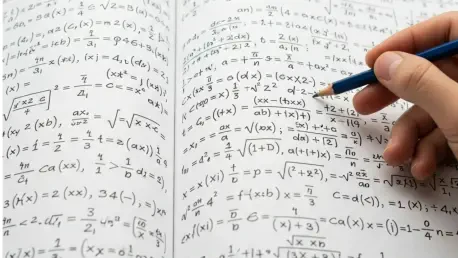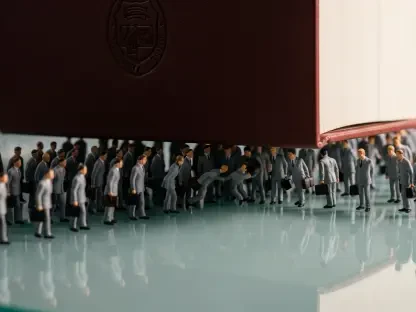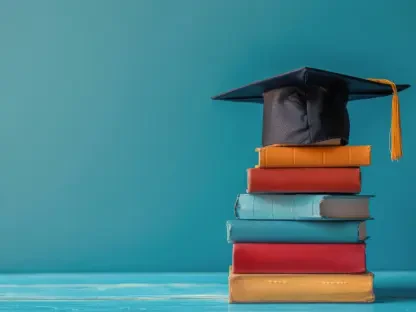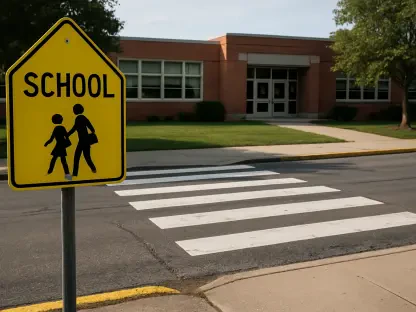Imagine a classroom where numbers dance on a whiteboard, but for some students, the lesson remains silent and inaccessible, not because of a lack of ability, but due to barriers in communication and teaching methods that fail to meet their needs. Deaf and hard-of-hearing (DHH) students often face significant challenges in mainstream math classrooms, where traditional approaches may not address their unique learning requirements. Despite being placed alongside hearing peers to promote inclusion, many of these students struggle to grasp concepts without tailored support. A growing body of research suggests that true inclusivity in mathematics education requires more than just physical integration; it demands a fundamental rethinking of curriculum design and instructional strategies. This pressing issue has sparked discussions among educators and researchers globally, with innovative solutions emerging to bridge the gap. Exploring these developments reveals a path toward an educational environment where DHH learners can thrive, turning silence into success through adapted frameworks and dedicated advocacy.
Rethinking Curriculum for Unique Learning Styles
Adapting math education for DHH students begins with recognizing their reliance on visual learning as a primary mode of understanding. Traditional lectures heavy on verbal explanations often leave these students at a disadvantage, unable to fully engage with abstract concepts like algebra or geometry. Educators are increasingly turning to hands-on tools, such as manipulatives, which allow students to physically interact with mathematical ideas, making the intangible more concrete. These tools, combined with visual aids, create a bridge to comprehension that spoken words cannot always provide. Beyond materials, strategic classroom setups play a vital role, with seating arrangements designed to maximize visibility of teachers and interpreters. Such adjustments not only facilitate better communication but also boost confidence, enabling DHH students to participate more actively. This shift in approach underscores a broader realization that inclusion is not about fitting students into existing molds but reshaping the educational landscape to meet diverse needs.
Another critical aspect of curriculum adaptation involves fostering collaboration between DHH students and their hearing peers. Group activities tailored to encourage interaction help break down social barriers while reinforcing mathematical concepts through shared problem-solving. Equally important is the partnership between teachers and sign language interpreters, who must work in tandem to ensure that lessons are accurately conveyed in real time. This synergy extends to involving parents and the wider school community, creating a support network that reinforces learning outside the classroom. Remediation strategies, specifically designed for DHH learners, further ensure that no student is left behind, addressing gaps in understanding with targeted interventions. By weaving these elements into a cohesive curriculum, educators can create an environment where visual learning is not just accommodated but celebrated as a strength, paving the way for academic success across varied abilities and communication styles.
Building a Culturally Relevant Framework
A deeper layer of inclusivity in math education for DHH students lies in ensuring that the curriculum resonates with their cultural and linguistic context. Developing terminology in Filipino Sign Language (FSL) for advanced mathematical concepts, such as the Pythagorean theorem or quadratic functions, exemplifies this effort. These terms are crafted to reflect local culture and the specific communication needs of the deaf community, making abstract ideas more accessible and relatable. This initiative, driven by collaborations with research centers, highlights the importance of language as a tool for inclusion, ensuring that DHH students are not just learning math but doing so in a way that honors their identity. Such culturally sensitive adaptations are a step toward dismantling systemic barriers, allowing students to engage with content on their own terms rather than through a framework designed solely for hearing learners.
Extending beyond mathematics, the potential for this culturally relevant approach to influence other subjects like science or English is significant. If successful, a model that prioritizes linguistic and cultural alignment in one discipline could serve as a blueprint for broader educational reform. This vision requires sustained commitment from educational institutions to invest in resources, training, and research that prioritize the needs of DHH learners. Stakeholder engagement, from policymakers to classroom aides, becomes essential in scaling these efforts, ensuring that adaptations are not isolated experiments but part of a systemic shift. Moreover, avoiding disruptions, such as unrelated school events that can derail focused learning, is crucial to maintaining momentum. By embedding cultural relevance into curriculum design, education systems can move closer to a model where inclusivity is not an afterthought but a foundational principle guiding every lesson and interaction.
Lessons from Advocacy and Practical Innovation
The journey toward inclusive math education is often fueled by personal dedication and innovative teaching moments. Consider the impact of a single lesson adapted years ago, where a teacher used a metaphor of earnings and debt to explain integers to a struggling deaf student. Such creative strategies, born from a commitment to accessibility, have inspired broader advocacy for DHH education. Educators who immerse themselves in learning sign language and understanding deaf culture bring a unique perspective to the classroom, driving changes that benefit all students. This hands-on approach has led to proposals for establishing dedicated deaf studies programs at universities, provided there is thorough preparation and institutional support. These efforts demonstrate that transformative change often starts small, with individual educators challenging norms and pushing for systemic improvements that prioritize accessibility.
Reflecting on these developments, it becomes clear that practical innovations must be paired with ongoing research to refine teaching methods. Evaluation models that balance scientific rigor with humanistic insights offer a way to assess how classroom dynamics influence learning outcomes for DHH students. Prioritizing conceptual understanding over strict adherence to lesson timelines allows for flexibility, ensuring that students grasp foundational ideas before moving forward. Teacher and stakeholder perspectives are invaluable in this process, providing real-world feedback on what works and what needs adjustment. As these insights shape curriculum adaptations, the focus remains on creating an interconnected system where every element—from teaching tools to community involvement—supports student success. This holistic approach not only addresses immediate classroom challenges but also sets a precedent for how education can evolve to embrace diversity in learning styles and communication needs.
Paving the Way for Systemic Change
Looking back, the strides made in adapting math education for DHH students showed a remarkable blend of innovation and determination. Tailored curricula, visual learning tools, and culturally relevant language development stood as testaments to what dedicated educators achieved when supported by collaborative networks. Moving forward, the next steps involve scaling these efforts through policy reforms and institutional commitments, ensuring that inclusivity becomes a standard rather than an exception. Investing in teacher training programs focused on sign language and deaf culture is essential, as is the continued development of accessible materials across subjects. Advocacy needs to extend to policymakers, urging them to prioritize funding for specialized resources and research. By building on past successes, education systems can create a future where every DHH student has the opportunity to excel, proving that barriers once thought insurmountable are, in fact, challenges waiting to be overcome with creativity and resolve.









